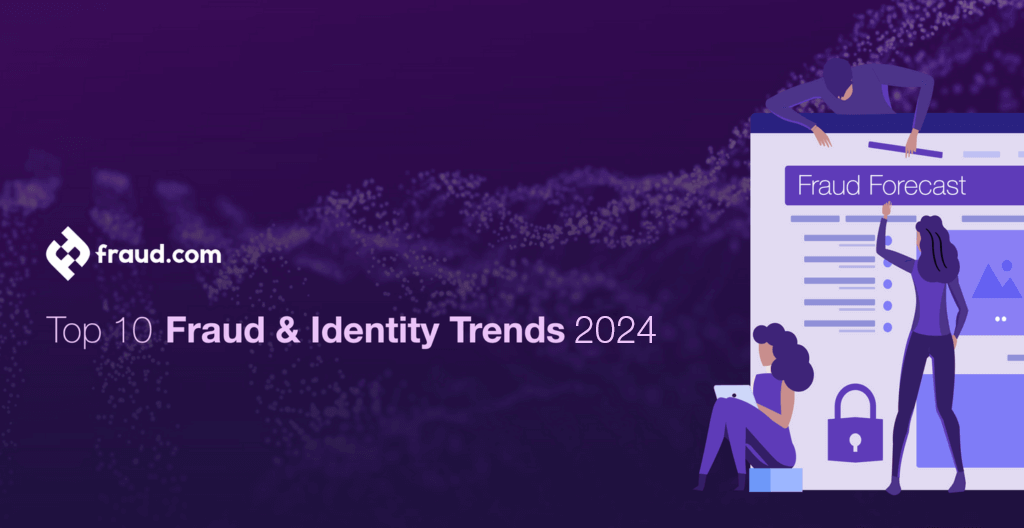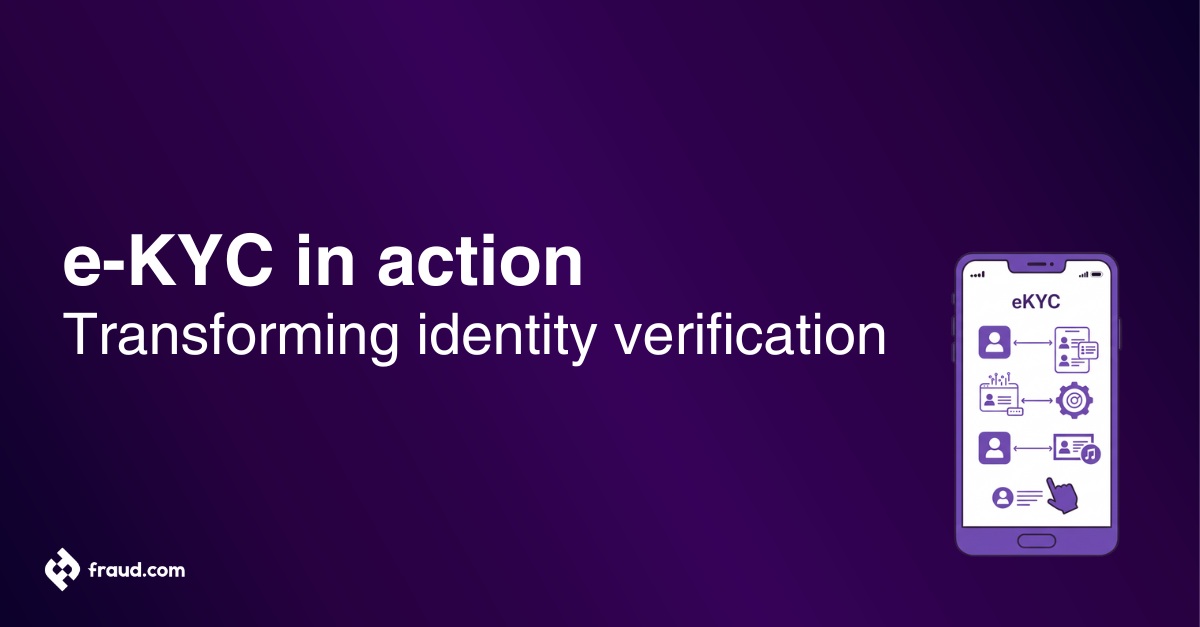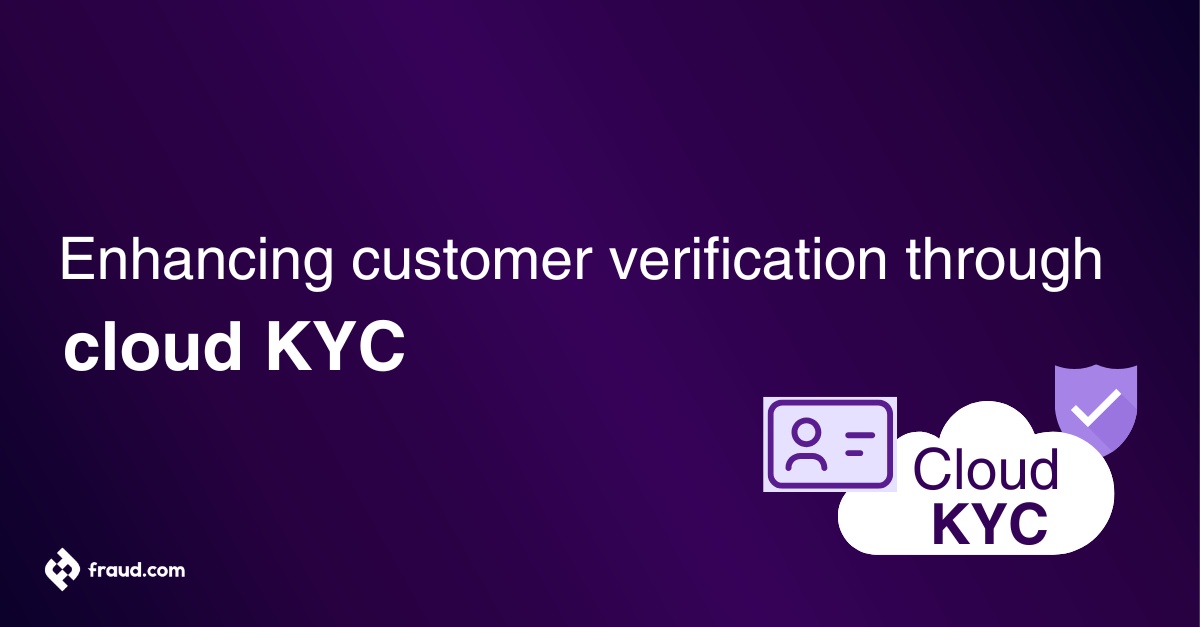Fraudsters will always seek new ways to exploit people’s private information.
Cybercrime and fraud prevention is an ever-changing and evolving field based on varied tactics used by fraudsters.
While fraudsters will always seek to conduct new fraud forms, you can be better prepared to mitigate their risks.
One place to start is being aware of the most frequent fraud attacks today.
Here are the top 10 biggest fraud trends you need to know for 2024.
Table of Contents
Toggle1. Automation
Automation makes it easier for criminals to exploit users’ accounts while remaining undetected themselves, increasing the risk of fraud. With automation, fraudsters use software or bots to accomplish tasks that otherwise require human intervention, thus covering more ground.
For example, credential stuffing is the act of testing stolen or leaked credentials on websites and services at scale to see if they work on any accounts.
2. Account Takeover
Account takeover (ATO) is a type of identity theft (ID Fraud) that occurs when a fraudster gains access to an individual’s or company’s computer accounts, email accounts, and other personal information. In a typical ATO attack, hackers use phishing and malware methods to acquire legitimate user credentials or buy them from the dark web; they then use stolen credentials for account takeover.
Automated takeover attacks are carried out using stolen credentials, and organisations are particularly vulnerable to these attacks. A takeover can lead to a variety of crimes and direct financial losses, including:
● Bank account takeovers (Current accounts, Credit Cards)
● Money laundering
● Stealing loyalty or rewards points
● Reselling subscription information
3. Adoption of New Digital Payments and Methods
Digital payment platforms and cryptocurrencies disrupt traditional payments, allowing consumers and businesses to make payments more quickly and efficiently.
Technologies that enable new ways to pay are also open to new avenues of attack from fraudsters, as they use stolen credentials to carry out fraud and ID theft.
Cryptocurrencies, while not quite mainstream in their use yet, are growing in popularity, and the anonymity provided by these currencies makes it easy for criminals to carry out illicit activities.
4. Ongoing Challenge of Balancing Fraud & Customer Friction
Online businesses must balance risk and opportunity when mitigating fraud. In the case of online shopping, the amount of “friction” customers experience during the checkout process correlates with their conversion success.
The balance between friction and fraud becomes even more challenging across multiple channels, such as web, mobile, and point of sale. Merchants and issuers seek alternative authentication solutions (such as passive behavioural biometrics and passwordless authentication via biometrics with liveness detection) to attain this balance to improve customer experience and reduce risk.
5. Rise of Synthetic Identities
According to the McKinsey Institute, synthetic identity fraud is the fastest-growing type of financial crime in the United States and is also on the rise around the globe. Indeed, synthetic identity fraud comprises 85% of all fraud right now.
With this type of fraud, fraudsters create new identities by piecing together elements of a person’s personal information and combining them with false identifiers. Essentially, they take bits of legitimate data, add fictitious information, and create a new identity. Organisations are struggling to prevent synthetic identity fraud; after all, the whole point of synthetic identity fraud is to create a synthetic victim that does not exist in real life.
6. Escalating Cost of Fraud
The total cost of fraud is becoming a genuine concern, from fraud losses, prevention tools and headcount costs to the customer lifetime value impact. It’s estimated that Fraud loss is $5.4 trillion globally; according to the University of Portsmouth, fraud accounts for approximately $185 billion in losses in the U.K. and a 9.9% increase in the cost of fraud for U.S. financial services firms.
Why the increase? As more and more people have turned to online and mobile channels to shop, fraudsters again have followed, thus the increase in fraud losses and associated costs with fighting fraud.
7. Growing Need for Multi-Layered Fraud Assessment
The digitisation of e-commerce and banking is a well-established trend that shows no sign of abating; in parallel, fraud across these digital channels has remained a constant and relentless issue.
On the other hand, fraud prevention leaders are generally trying to defeat fraudsters with limited and siloed fraud management capabilities.
To achieve the best fraud prevention results, fraud prevention leaders must orchestrate all relevant data points, risk signals, and customer data to form a centralised and balanced response that reduces risk, customer friction, and associated prevention costs.
8. Targeted Attacks
Another growing threat is targeted attacks, which occur when cybercriminals compromise a target entity’s entire infrastructure, including its network and computer systems. They can conduct such attacks anonymously and over a long period, gaining access to critical financial data and causing significant losses for institutions and constituents.
Targeted attacks occur in phases, thus less likely of being discovered.
Although targeted attacks typically happen at the entity level and don’t target specific consumers, these attacks put customer information at risk and can harm an organisation’s reputation.
9. Heightened Need for Real-Time Risk Assessment
As online and mobile app usage increases, there’s a growing need for comprehensive fraud detection, identity verification and authentication solutions to unite. Such solutions call for real-time risk assessment that leverages the latest AI, Machine learning, and fraud orchestration tools to manage the customer’s risk collectively and trust, utilising all associated risk signals to drive fair and balanced customer satisfaction.
10. Account Security
To protect against fraudsters, organisations need to take a layered approach to account security. The culprit behind system attacks is often single-factor authentication methods that result in unauthorised access to accounts, enabling customer account fraud, identity theft, ransomware attacks, and other fraudulent activity, notes the Federal Financial Institutions Examination Council.
With multi-factor authentication, institutions use more than one distinct authentication factor to successfully authenticate customers, such as behavioural biometrics, device id, and biometric authentication.
Get Ahead of Fraud Trends
At fraud.com, we strive to create a unified, familiar customer experience that reduces fraud and boosts customer satisfaction and conversions. Throughout the customer journey, it’s essential to incorporate safety measures that protect organisations and their users, prevent disruptions in the buying process, and keep fraudsters at bay. Connect with us to find out more about our fraud and identity theft solutions — so you can continue doing what you do best: growing your business.









